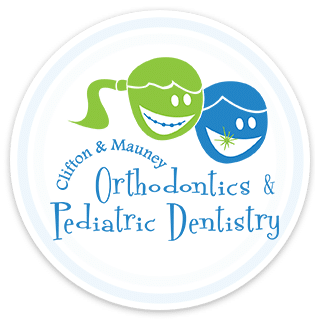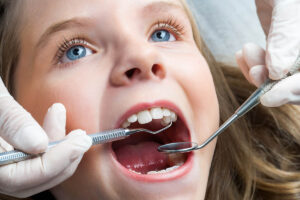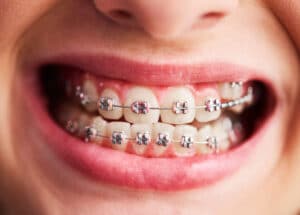For many children with autism, dental visits can feel unfamiliar and intense. Autism dental care focuses on gentle steps, predictable routines, and a calm dental environment so children can get the dental care they need with less stress. In Chapel Hill, Clifton & Mauney Orthodontics & Pediatric Dentistry supports families by preparing kids for each dental visit, using communication that matches their needs, and building trust at every step.
Contact Clifton and Mauney in Chapel Hill, NC today.
How autism affects dental care
Autism Spectrum Disorder (ASD) affects communication, sensory processing, and flexibility with routines. Bright lights, loud noises, new tastes, and unfamiliar tools can feel overwhelming. Research shows about 1 in 31 U.S. children are on the autism spectrum, so many families will navigate oral health with autism in mind.
Sensory sensitivities can make toothbrushing harder at home, and changes in routine can delay dental visits. Some children take medicines that reduce saliva, which can increase cavity risk. Practical guidance for caregivers from NIH’s dental institute explains how planning, patient‑centered communication, and consistent routines can improve oral health for people with developmental disabilities, including autism.
Why early and consistent care matters
- A familiar dental office helps children build comfort over time, reduces anxiety, and supports prevention.
- Pediatric dentists and dentists with specialized training in behavior guidance can tailor a plan for your child.
- Regular cleanings and exams lower the risk of dental disease like cavities and gum problems, which are common when brushing is hard.
The American Academy of Pediatric Dentistry encourages every parent to establish a “dental home” in early childhood so their child can gain familiarity with their dentist and team to receive coordinated, family‑centered care.
What to expect at a sensory‑aware dental clinic in NC
A supportive dental clinic welcomes children with autism and adapts the dental environment to reduce sensory overload:
- Lower lighting or sunglasses, quiet music, and visual distraction when helpful
- Simple, step‑by‑step language with show-and-tell before each procedure
- Choice of sitting fully back or slightly reclined in the dental chair
- Short breaks during cleaning, plus options to touch tools before they are used
- Clear expectations for X-ray photography, with practice and gentle coaching
Studies of pediatric dentistry clinics show that a sensory‑adapted dental environment can reduce physiological stress and observed distress for autistic children during cleanings, compared with a standard setting.
Practical tips for parents and caregivers
Use these practical tips to prepare children with autism for dental care and a positive experience:
- Create a routine, for example brushing after breakfast and before bed. Many families follow the simple 2‑2‑2 rule, meaning brush 2 times a day for 2 minutes and visit a dentist 2 times a year.
- Choose tools that fit your child, such as a soft bristled toothbrush, a small head, or a handle grip.
- Try sensory‑friendly toothpaste if taste or texture bothers your child. Start with a tiny smear and increase slowly.
- Use a visual schedule that shows the brushing steps and a separate visual schedule for dental visits.
- Read a story about visiting the dentist, riding up and down in the dental chair, opening the mouth when needed, etc.
- Practice at home with a mirror, a flashlight, and counting teeth. Let your child explore a clean toothbrush in the child’s mouth without paste at first.
- Offer rewards after small steps, like sitting in the chair or getting an x ray, to reinforce success.
- Bring comfort items, for example a weighted lap pillow, noise‑reducing headphones for loud noises, or a favorite toy.
Autism Speaks also shares checklists and visual tools that many families find helpful when preparing for dental appointments.
Step‑by‑step: what we can do together at the visit
- Before the visit, tell the dental team about sensory preferences, communication style, and any triggers.
- At check‑in, use a brief script so the child knows what comes next, and then meet the dentist in a quiet room when possible.
- In the dentist’s room, preview tools and equipment, then try show-and-tell. For example, the hygienist shows the mirror, lets the child touch it, then looks in the mouth for a quick count.
- Start with short procedures, then build to full cleanings and X-rays. For some children, comfort improves over several visits as the dental home relationship grows.
- During treatment, the dental staff can pause when needed, give a simple update, and praise specific behaviors like “great opening” or “still hands.”
Behavior guidance and sedation dentistry, when needed
Behavior guidance includes many non‑pharmacologic strategies, such as positive reinforcement, modeling, distraction, and desensitization. For some patients, nitrous oxide or other sedation dentistry options may be considered to complete necessary dental treatment safely. At Clifton and Mauney, decisions are individualized, based on your child’s medical history, tolerance for procedures, and the urgency of care, and they follow professional guidelines from pediatric dentistry organizations.
Building a supportive dental home in North Carolina
- Start early to create trust, even if only a quick look happens at the first visit.
- Keep visits short at first, then extend as comfort grows.
- Schedule dental appointments at times your child is usually calm and regulated.
- Work with one consistent provider when possible so the practice can learn your child’s strengths.
Our practice welcomes children with autism and sensory issues, and we collaborate with parents to create a positive experience over time. Learn more about our values and approach at why choose us.
Small steps, big progress
Autism dental care works best when everyone partners together, the family, the dentist, and the child. With predictable routines, a supportive dental environment, and a steady dental home, children with autism can build skills and confidence visit by visit. For compassionate care in NC, reach out to our team or request an appointment today.
FAQs about autism dental care
How does autism affect dental care?
Autism can affect oral health routines and tolerance for sensory input. Children with autism may have strong reactions to tastes, textures, bright lights, or the feel of tools in the mouth. They may also need more time to process directions and to adjust to new steps. A consistent dental home and predictable routines improve acceptance of care.
How do dentists work with autistic patients?
Dentists use clear language, visual supports, and scheduled breaks. The dental team may try a sensory‑adapted dental environment, give choices, and use positive reinforcement. When needed, pediatric dentists can consider sedation dentistry, following safety guidelines and only when benefits outweigh risks.
What is the 6 second rule for autism?
Many therapists use a simple “wait time” strategy, pausing about 6 seconds after giving an instruction. The pause allows processing and reduces pressure. It is a practical tip, not a medical rule. Families can pair the pause with a visual cue or gesture during brushing or a dental visit.
How do dentists deal with sensory issues?
Dentists can dim lights, reduce unexpected sounds, use visual distraction, simplify flavors, and break procedures into small steps. We create a calm environment and let children preview equipment as well.
How do autistic people go to the dentist?
Planning helps. Use a social story, a visual schedule, and practice short visits. Share preferences and triggers with the office, arrive a little early to settle, and bring comfort items. Some adolescents and adults with autism use the same supports.




